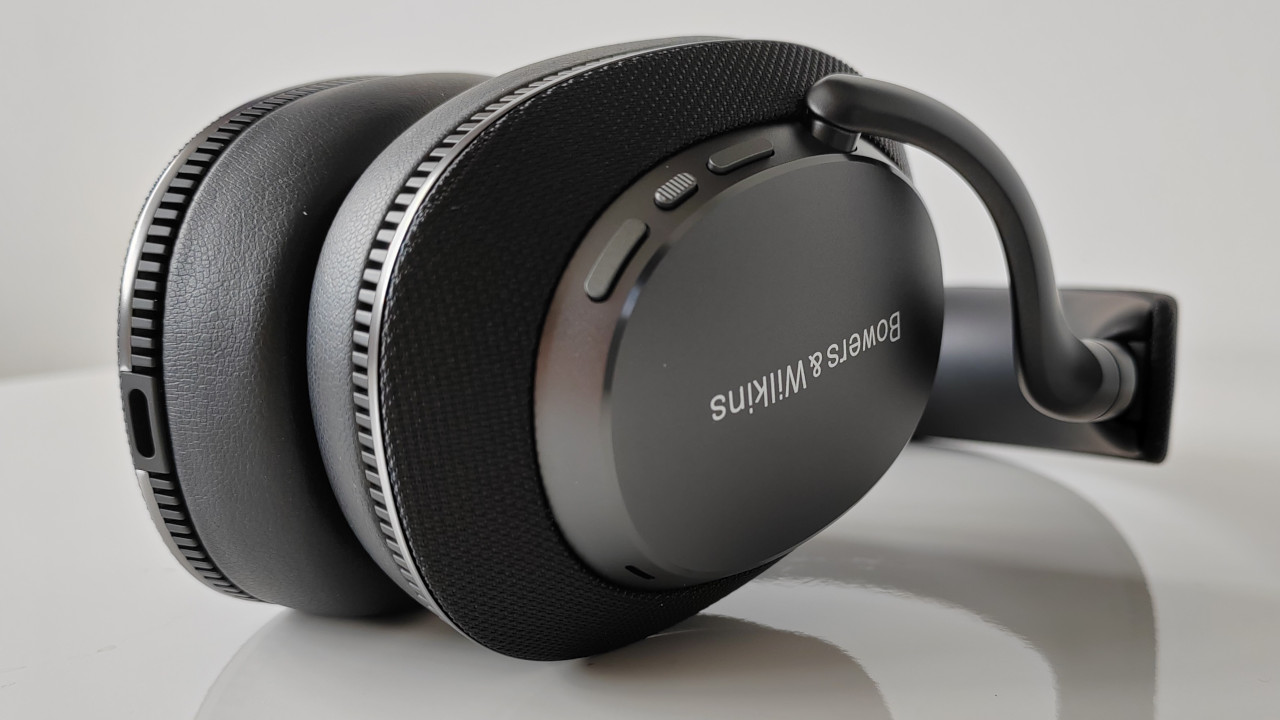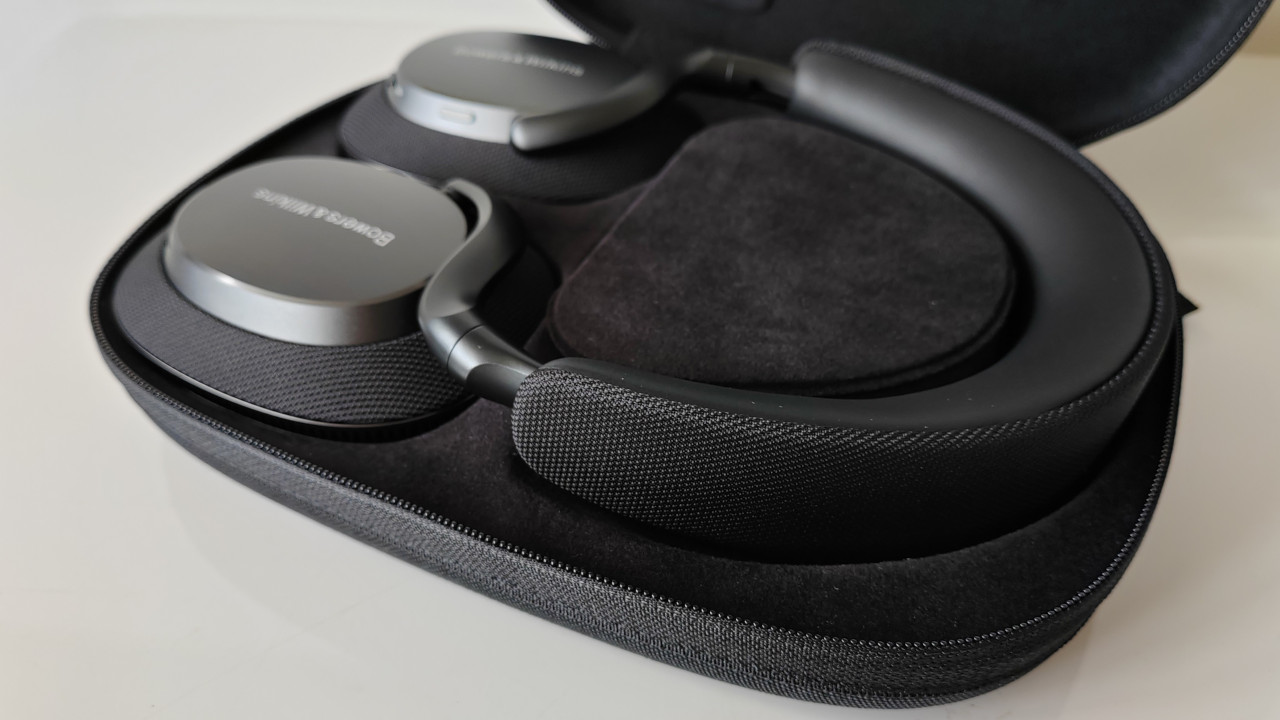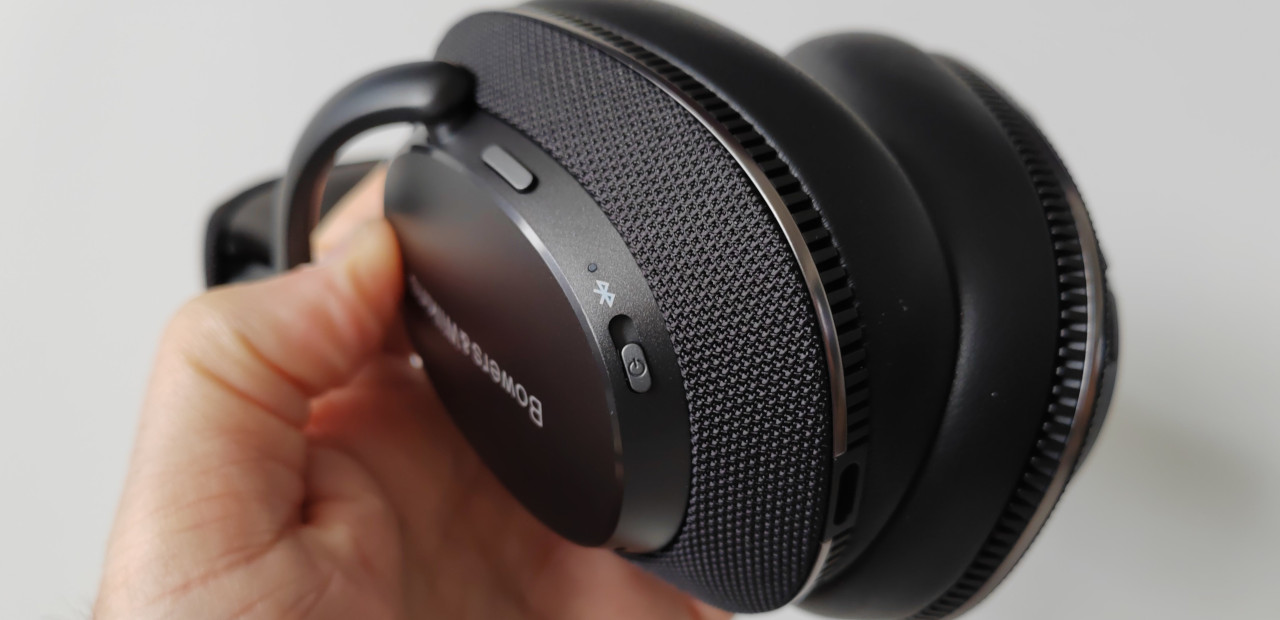Louder Verdict
The Bowers & Wilkins Px7 S3 are far more than a model number revision. These wireless wonders sound sensational for the price, and boast a stack of innovations that reward where it counts - in your ears. Battery life is good, noise cancelling is more than up to everyday use, and they’re as at home with Cream as they are Hot Milk. They’re the best Bowers & Wilkins over-ears to date.
Pros
- +
Dynamic with exceptional detail
- +
Comfy design for longer listening sessions
- +
Ungraded Active Noise Cancellation
Cons
- -
Spatial audio support and LE Audio not available at launch
- -
You need the app to fine tune performance
You can trust Louder
The Px7 S3 is the latest active noise cancelling wireless headphone from Bowers & Wilkins. While it’s the third iteration of the Px7, there are significant upgrades which make this an enticingly fesh proposition from a brand famed for its recording studio affiliation.
With an overhauled design and new internal architecture, some might even argue that these are Bowers & Wilkins most advanced headphone to date. If you’re looking for headphones able to do justice to both airy Prog and three-cord thrash, they could be right up your street.
Design
Noticeably slimmer than their predecessor, the Px7 S3 are lovely headphones to wear. Weight distribution is good, and the notorious B&W clamping force has been mellowed for a more forgiving, all-day fit.
Build quality is also reassuringly premium. The ear cups are soft vegan PU leather, and there are minor improvements to the headband and arm mechanism. The latter pivots effortlessly but doesn’t fold down.
Features

There’s a lot that’s fresh about these head-huggers. Bowers & Wilkins may have traditionally lagged behind rivals when it comes to noise cancellation technology, but that’s been largely addressed here.
The Px7 S3 employs a total of eight microphones. Four are used to monitor and neutralise ambient noise, each angled to maximise environmental data capture, while two more measure the output of each driver; the final pair are dedicated to call duty.
It’s this choreography that gives the Px7 S3 its ability to muffle everything from general chit chat to more noisy commutes. The Quick Action button on the left hand cup steps you through the three ANC options: On, Off and Pass through. I’d hesitate to suggest the headphones are class leading when it comes to noise cancellation, but they’re now so near the best of the rest, it’s no longer a practical concern.
The latest news, features and interviews direct to your inbox, from the global home of alternative music.
The underlying architecture comes from Qualcomm, now equipped for aptX Adaptive 24-bit 96kHz and aptX Lossless streams.
Unlike some headphone designs that leave DSP and amplification to one catch-all processor, the Px7 S3 splits duties, employing both a dedicated digital signal processor, and a discrete headphone amplifier. This separation brings several benefits, including superior musicality, and a cleaner transient response.
Want future-proofing? Bluetooth LE Audio, with Auracast broadcast support and LC3 codec, is promised via a firmware update later this year. Auracast supports streaming to multiple compatible headphones (think late night silent discos), so that might be useful. Spatial audio support is also inbound via OTA, which I’m particularly excited about. Bowers insists its flavour of Spatial will stay true to its naturalistic house sound, and definitely won’t incoporate Head Tracking, so I’m intrigued.
Battery life? 30 hours with ANC on, plus a 15-minute quick charge that gets you an impressive seven hours of additional playback.
Sound

These over-ear headphones sound fulsome and fabulous. The 40mm biocellulose dynamic drivers may have been carried over from the S2e, but Bowers & Wilkins didn’t leave them alone. The entire drive system, including voice coil, suspension, magnet, and the rigid chassis that holds them, has been completely re-engineered.
The result is lower mechanical resonance, greater rigidity, and tighter control over driver excursion. This matters, because it translates to reduced distortion at both low and high volumes, an especially important factor when you're pushing the sonic envelope with double-kick drums and shuddering riffs.
Stereo presentation is wide but never untethered. Pink Floyd’s Money makes a virtue of its stereophonic looping coins and ringing cash registers, and these cans make the mix a joyous thing. When Dick Parry’s tenor sax rips up the sweet spot, it’s like he’s barged into the room through some 70’s wormhole.
When the clocks and alarms go off, heralding Time, I could swear I was having a foretaste of Spatial niceties to come. Bass handling is spot on, those big drivers doing majestic justice to Nick Mason’s cascading roto-toms.
The dynamics, and imaging are sensational. The escalating boogie of Some Mutts (Can’t be Muzzled) by Amyl And The Sniffers might smother the vocals but the music is locked in place, furiously pounding away. The Px7 S3 effortlessly preserves the balance, keeping the centre stage clear for chorus and gnarly guitar soloing.
The ear cups are also a whizz portraying ambiance, be it the choral chanting that opens Templars by Sabaton, or the epic staging of Thin Lizzy's Live And Dangerous. The Px7 S3 somehow always knows how to capture the moment.
Low frequencies are controlled, but not heavy handed. The bass solo that opens Black Sabbath’s N.I.B sounds fat and fleshy, just like it should. Detail and timing is sharp and tight.
Obviously, hi-res file playback sounds glorious. One of my favourite recordings, a 24-bit 96 KHz cut of Lou Reed’s Satellite Of Love, is crisp and beguiling. There’s an uncanny realism here. Shut your eyes and you’re suddenly in the studio, finger snapping in the background.
What’s striking is how detailed the Px7 S3 sound, even at low volumes. Some may put that down to cleaner amplification, improved driver control, and minimised distortion. I prefer headphone hoodoo. You decide.
The alternatives
Marshall Monitor III A.N.C
Marshall’s flagship over-ears are Louder favourites. They wear their rock‘n’roll styling with pride, and combine fold-down convenience with great everyday noise cancelling. They also frickin’ excellent with guitar rock.
Sony WH-1000XM5
Sony’s ever popular over-ears are the definition of cool and comfortable. Memory foam ear cups make them good for an afternoon session of double albums, and noise cancelling is excellent. However, drivers are just 30mm, which looks a little polite in this company.
Steve is a home entertainment technology specialist who contributes to a variety of UK websites and mags, including Louder Sound, Yahoo UK, Trusted Reviews, T3, The Luxe Review and Home Cinema Choice. Steve began his career as a music journo, writing for legendary rock weekly Sounds, under the nom de plume Steve Keaton. His coverage of post punk music was cited in the 2015 British Library exhibition Terror and Wonder: The Gothic Imagination, as a seminal influence on the Goth music scene.


